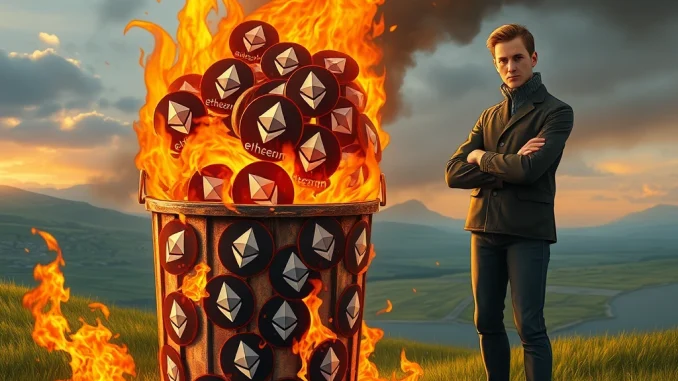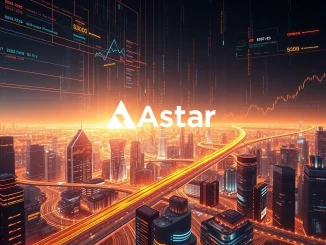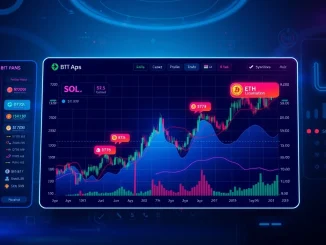
Hold onto your hats, crypto enthusiasts! The ever-outspoken veteran trader Peter Brandt has just dropped a bombshell that’s sending shockwaves through the Ethereum community. Known for his decades of experience in traditional markets and his increasingly critical stance on certain cryptocurrencies, Brandt didn’t mince words when responding to a user’s frustration with Ethereum’s layer-2 networks. He simply declared: “ETH is worthless garbage.” Ouch. But is there any substance behind this fiery statement, or is it just another case of crypto Twitter drama? Let’s dive into the details and dissect this explosive claim.
Peter Brandt’s Shocking Ethereum Criticism: What’s Behind the ‘Worthless Garbage’ Label?
Brandt’s comment came in response to a tweet from X user @Web3Kristel, who highlighted the often confusing and cumbersome process of transferring assets between the Ethereum mainnet and its various layer-2 scaling solutions. This complexity is a known pain point for many users, especially those newer to the crypto space. But does this usability issue warrant such a harsh and definitive statement like “worthless garbage”?
Let’s break down the context:
- The Trigger: Layer-2 Complexity: The conversation started with the user expressing frustration about the intricacies of bridging and transferring assets across Ethereum’s layer-2 ecosystem. This is a valid concern, as navigating different bridges, understanding gas fees on various networks, and ensuring compatibility can be challenging.
- Brandt’s Blunt Agreement: Peter Brandt, known for his straightforward and often contrarian views, simply echoed this sentiment with his inflammatory “worthless garbage” remark. This wasn’t a nuanced critique; it was a decisive dismissal.
- The Crypto Twitter Firestorm: Unsurprisingly, Brandt’s comment ignited a flurry of responses. Ethereum proponents rushed to defend the network, highlighting its strengths and ongoing development. Critics, on the other hand, seized the opportunity to amplify Brandt’s statement and reiterate their own doubts about ETH.
[img]Example Image URL[/img]
Peter Brandt’s tweet sparks debate about Ethereum’s value and usability.
Is Ethereum Really ‘Worthless Garbage’? Examining the Claims
Calling Ethereum “worthless garbage” is a pretty extreme statement, especially considering its position as the second-largest cryptocurrency by market capitalization and the backbone of a vast ecosystem of decentralized applications (dApps), NFTs, and decentralized finance (DeFi). So, what could Brandt possibly mean? Let’s analyze potential interpretations:
1. Usability Issues and Layer-2 Frustration
Brandt’s agreement with the initial tweet points directly to the usability challenges within the Ethereum ecosystem, particularly concerning layer-2 networks. While layer-2 solutions like Polygon, Arbitrum, and Optimism are designed to address Ethereum’s scalability issues and high gas fees, they introduce their own set of complexities:
- Bridging Complexity: Moving assets between mainnet and layer-2s, or even between different layer-2s, often requires using bridges, which can be confusing and sometimes carry security risks.
- Fragmented Liquidity: Liquidity can be spread across multiple layer-2s, potentially leading to slippage and less efficient trading.
- User Experience: For the average user, navigating this multi-chain landscape can be overwhelming compared to more streamlined blockchains.
Is this complexity enough to deem Ethereum “worthless”? Probably not in the literal sense. However, it does highlight a significant hurdle for mass adoption. If mainstream users find the experience too convoluted, it could hinder Ethereum’s growth potential.
2. Brandt’s Broader Crypto Skepticism?
It’s worth noting that Peter Brandt has expressed skepticism about the long-term viability of many cryptocurrencies, including Ethereum. He is a seasoned trader with a traditional finance background, and his perspective might be rooted in fundamental value analysis rather than the speculative narratives often prevalent in the crypto space.
Perhaps “worthless garbage” is Brandt’s way of expressing his belief that Ethereum, despite its current popularity and ecosystem, lacks intrinsic value in the long run. This could stem from concerns about:
- Scalability Limitations: While layer-2s are helping, Ethereum’s base layer still faces scalability challenges compared to newer blockchains designed for higher throughput.
- Competition: The crypto landscape is constantly evolving, and Ethereum faces increasing competition from alternative layer-1 blockchains that promise faster speeds and lower fees.
- Regulatory Uncertainty: The regulatory landscape for cryptocurrencies remains unclear, and potential clampdowns could impact the entire crypto market, including Ethereum.
Actionable Insights: Navigating the Ethereum Layer-2 Maze
Regardless of whether you agree with Brandt’s harsh assessment, the underlying issue of layer-2 complexity is real. If you’re using Ethereum and its layer-2s, here are some actionable insights to navigate this space more effectively:
- Educate Yourself: Take the time to understand how layer-2 networks work, the different types of bridges, and the associated risks. Resources like Ethereum.org and various layer-2 project websites offer valuable information.
- Start Small: Begin with small amounts when experimenting with layer-2s and bridging to minimize potential losses if you make a mistake.
- Choose User-Friendly Options: Some wallets and platforms are designed to simplify layer-2 interactions. Explore wallets that offer integrated bridging and layer-2 support.
- Stay Updated: The layer-2 landscape is rapidly evolving. Keep up with the latest developments, new bridges, and improved user interfaces to enhance your experience.
Conclusion: A Wake-Up Call or Just Noise?
Peter Brandt’s “worthless garbage” comment is undoubtedly provocative and likely intended to stir debate. While many Ethereum supporters will dismiss it as hyperbole, it does highlight a critical area for improvement: user experience, particularly within the layer-2 ecosystem.
Whether you believe Ethereum is destined for greatness or heading for the digital dumpster, Brandt’s words serve as a stark reminder that usability and accessibility are crucial for the long-term success of any technology, especially in the rapidly evolving world of cryptocurrency. The challenge for Ethereum developers and the community is to address these complexities and make the network truly user-friendly for the next wave of crypto adopters. Only time will tell if they can overcome these hurdles and prove the critics wrong.



